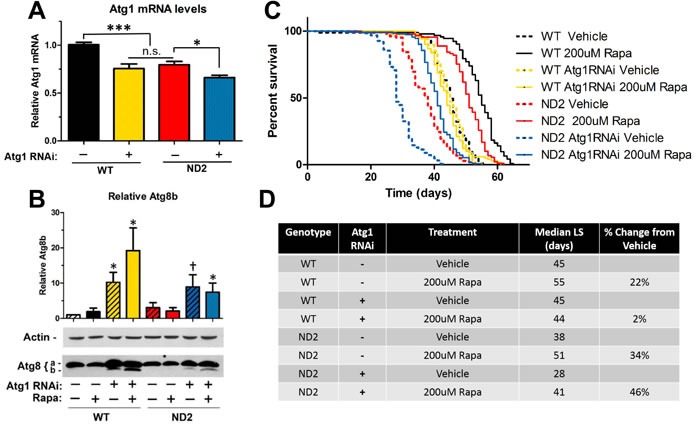Figure 3. Rapamycin extends lifespan in ND2 mutant flies in an autophagy-independent manner.

A. QPCR on Atg1 mRNA levels. ND2 mutant flies that are heterozygous for the Atg1RNAi transgene but not the Gal4 driver show decreased levels of Atg1 mRNA as compared to WT. Expression of Atg1 RNAi driven by Hsp70-Gal4 driver results in a further decrease in Atg1 mRNA levels. Data are represented as mean value normalized to geometric mean of three housekeeping genes +/- SEM. B. Western blot analysis of the autophagic marker Atg8. Upper band is Atg8a (non-lipidated form) and lower band is Atg8b (lipidated form). Accumulation of the lipidated form (Atg8b) as seen in flies expressing Atg1RNAi and the Hsp70Gal4 driver (Lanes 3,4,7 and 8) is associated with a blockage in autophagy [39]. *p < 0.05, † 0.05 < p < 0.1. C. Lifespan analysis of WT and ND2 flies that are heterozygous for the Atg1 RNAi transgene alone (WT: black, ND2: red), or heterozygous for the Atg1 RNAi transgene and the Hsp70-Gal4 driver (WT: Green, ND2: Blue) on vehicle supplemented control food (dashed lines) or food supplemented with 200uM rapamycin (solid lines). Knockdown of autophagy in WT flies (yellow dashed line) abolishes the lifespan extension by rapamycin in WT flies (yellow solid line, p > .0.05). ND2 flies expressing Atg1 RNAi (dashed blue line) exhibit a significant decrease in lifespan compared to ND2 flies (dashed red line, ***:p < .001), but still prove responsive to rapamycin (solid blue line, ***:p < 0.001). D. Quantification of median lifespan.
